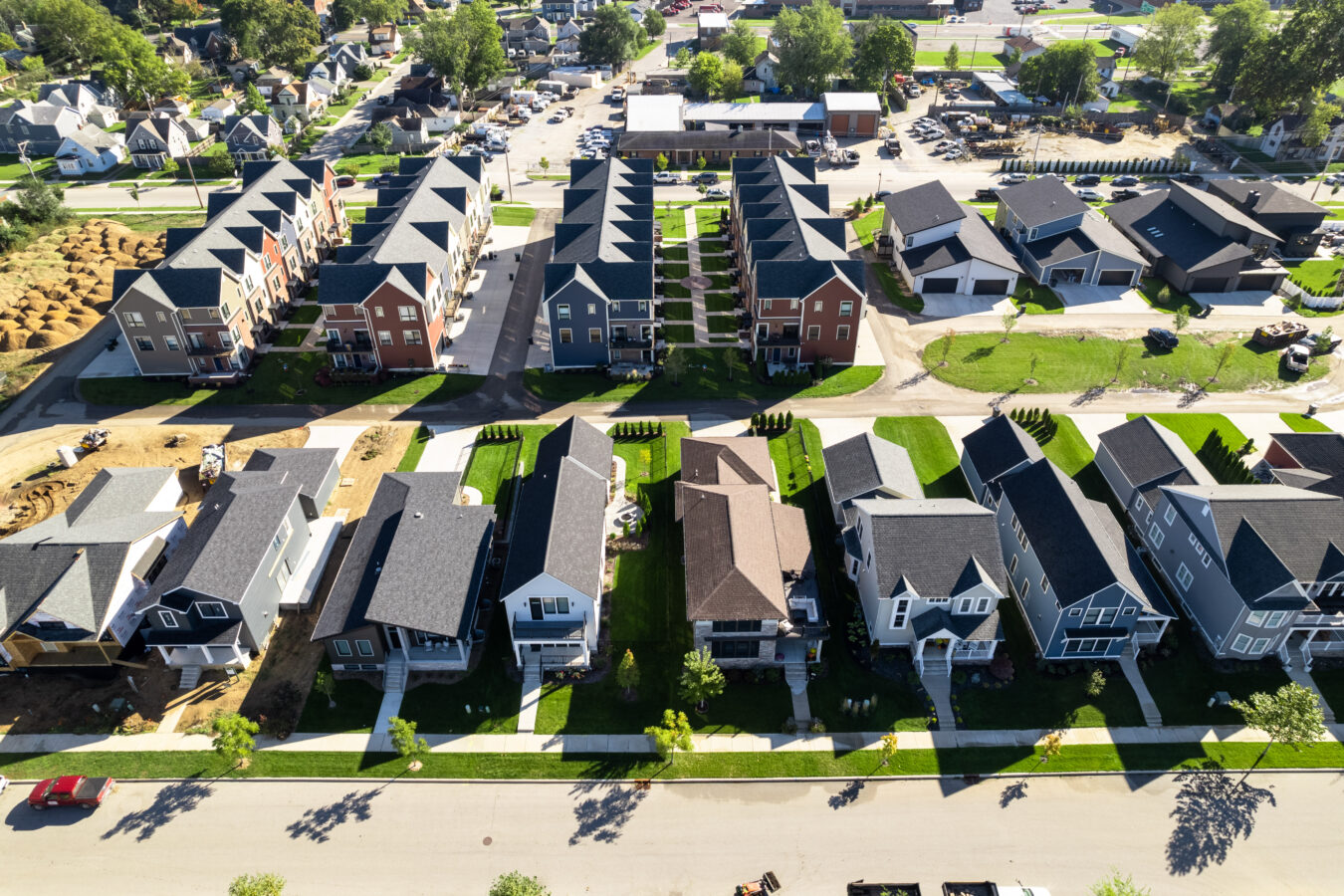
Crystal Welsh, Senior Urban Planner
Chris Godlewski, Senior Urban Planner
Many communities are faced with what can feel like insurmountable odds when attempting to address a lack of affordable housing options for residents at all income levels. The issue can be complicated when policies and processes unintentionally exacerbate the already high costs and long construction timeline for residential projects. For many of our partner communities, working with a professional planning team can help define their housing needs and provide a roadmap for making progress toward resolving this shortage.
How Local Zoning Ordinances and Plans Can Be A Tool to Help Alleviate Your Housing Issues
Based on a community’s character and vision for the future, some modifications to local regulations, policies, and processes can help to incentivize and spur the production of additional housing units. If your community has not reviewed and evaluated your zoning ordinances and policies recently, a thorough examination of the document to determine if it still serves your community may be in order. If your ordinance has not been updated in several years – or decades – there may be a chance that it no longer fits the community’s current needs or development trends.
Updating your zoning ordinances can be a great way for planners to help communities reevaluate their priorities, character, and vision for their future. A zoning ordinance is designed to set the standard for development in each zoning district, and that can change over time. For this reason, it is very important to look at your zoning ordinance on a regular basis to ensure it is still serving your community. Some common elements you may want to review are:
- Regularly requested variances
- Use of Planned Unit Developments (PUDs)
- Current density standards by zoning district
- If housing in a variety of housing styles and types are allowed by right in residential districts
Ways your community’s plans and policies can help address housing demand
- Create a Master (Michigan) / Comprehensive (Indiana) Plan if you don’t already have one.
- Build a schedule to regularly (annually) review and update any plans you have in place.
- Update your zoning ordinances and associated policies.
- Conduct a Housing Needs Assessment.
Identify regularly requested variances
Updating your ordinance to eliminate the need for common variances can address some of the barriers to providing housing. If a community regularly receives and approves requests for variances from development standards, it could be an indicator that those standards do not meet current demands or development patterns. The variance process is important as it provides a property owner with a mechanism to request to vary from the development standard due to an issue or constraint particular to their property. But if the same issue is not particular to a property and is instead a community norm, the standard might need to be revisited.
Common variances requested for housing projects include minimum lot size, lot frontage, and setbacks. Communities often grant these variances as the lots in many of their older neighborhoods would be unbuildable without them. If that is the case, then why is the standard there at all? The additional time and cost associated with the variance process, even if granted, can have a stifling effect on housing production, particularly on infill housing projects that are key to sustaining a community’s core neighborhoods.
We ask communities to consider, “What kind of variances are you frequently getting requests for? Those instances are great indicators that your ordinances may be out of sync with your community’s current development patterns and goals. The end goal is an ordinance that speaks to the community’s larger goals, but also to its day-to-day, real life usage.
Review use of Planned Unit Developments
Another good indication that your zoning ordinance might be out of balance is the use of Planned Unit Developments, or PUDs, to allow for mixed-use neighborhoods. Mixed-use neighborhoods – where residential, commercial, and sometimes industrial uses were all developed together –were the norm when many communities were established and have again become very desirable.
PUDs can be a very useful tool to promote mixed-use housing developments, as they allow for flexibility in the zoning ordinance standards by working with the local government to develop criteria that will determine project-specific building guidelines. To allow for this flexibility, a public approval process is required to ensure the community supports the changes to the development standards. This process can add time to the development schedule and costs to a project. If your community is frequently approving mixed-use projects through a PUD process, this is another solid indication that it might be time to review the ordinance to allow these types of developments by right.

Allow for density
Whether a housing unit is single-family or multi-family, owner or renter, generally speaking, a higher density can lead to a reduction in per unit cost. Adopting a higher density threshold (allowing more residential units per acre) can lead to a lower per unit cost of housing by reducing:
- Acres of land needed, thus the cost for land acquisition per unit.
- Linear feet of infrastructure (water, sewer, energy, telecommunication lines, roads) which saves material, labor, and maintenance costs.
It is important for a community to think about what type of density will feel natural for their location. A reasonable density in a large city would not be appropriate for a small town. A community can look to its historical neighborhoods and downtown to help gauge what would be authentic for them. By using your community’s traditional neighborhood lot size as a guide for appropriate density, you can reinforce your local character. In addition, if your zoning ordinance permits density that is consistent with your existing neighborhoods, you can help to reduce the need for developmental variances that can discourage infill housing projects.

Promote diversity in your housing stock
Regulations in many mid- and small-sized communities create a preference for larger, single-family detached residences. The costs associated with developing large single-family detached homes can be significantly greater than that of smaller single-family detached, single-family attached, or multi-family residential units.
Your zoning ordinance may be impacting housing availability by utilizing residential districts that:
- Limit significant portions of your community to single-family detached styles;
- Establish minimum unit size requirements that are not consistent with current demand for smaller living spaces;
- Do not allow for a mix of housing types (attached, detached, multi-family) in the same neighborhood; and/or
- Do not allow for neighborhood-based commercial uses in residential neighborhoods.
A variety of housing types can better serve your community, as not all residents have the same personal preferences, financial resources, or physical abilities. Mixing housing styles, sizes, price points, and ownership can create more aesthetically pleasing and diverse neighborhoods, creating opportunities for households with different needs to live in the same neighborhood. By allowing for a broader range of housing types along with limited commercial, communities can promote more diverse, walkable, and livable neighborhoods.
By reviewing and updating your zoning ordinance to allow for and promote the type of development desired, you can spur residential development in a manner that is consistent with your current goals and community’s character.
To learn more about our planning discipline, contact Crystal Welsh, Senior Urban Planner, at cwelsh@abonmarche.com.
